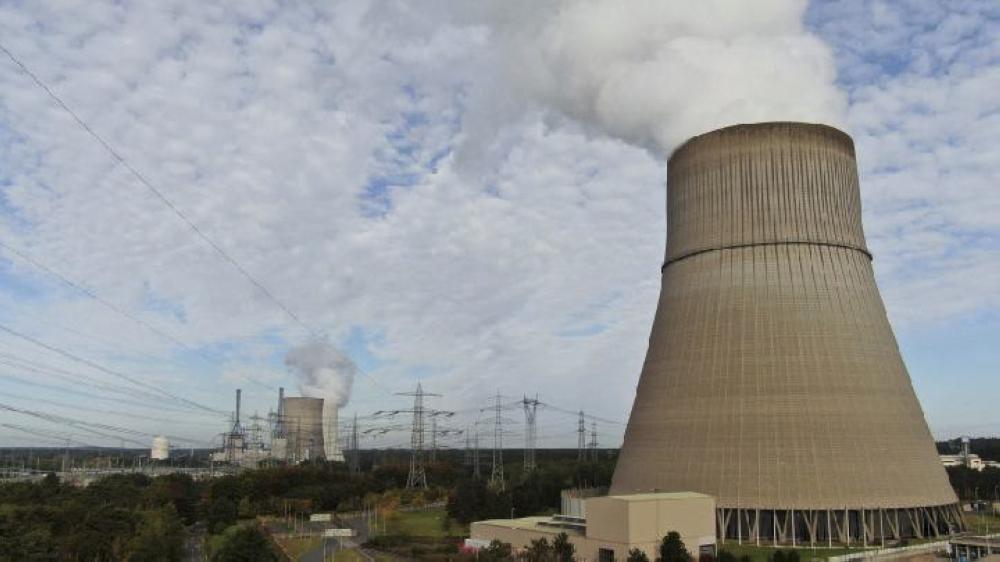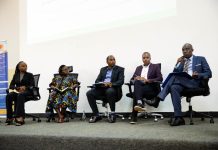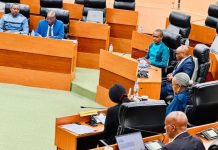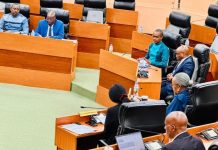Africa-Press – Rwanda. The government is planning to establish different nuclear power reactors/plants with capacity to produce 110 MW within 10 years starting from 2025, The New Times has learned.
Nuclear power reactors are facilities used to generate electricity by harnessing the energy released from nuclear fission.
Developing nuclear power plants to increase electricity generation capacity will cost Rwf1 trillion up to 2034/35 according to estimates by a new energy policy.
The feasibility study on nuclear power plants development is set to cost Rwf5.3 billion, according to officials.
Rwanda Atomic Energy Board (RAEB) CEO, Fidèle Ndahayo, told The New Times that nuclear power is needed in the country given that the available energy sources in Rwanda are insufficient to meet the country’s rapidly growing demand, both in the short term and the long term.
“While the total capacity of energy sources is assessed at 650–700 MW, goals of Vision 2050 are only achievable if the growth of installed capacity will be up to 2.5–4.5 GW depending on forecast scenarios.
To achieve these goals, the country has to identify new sources of energy, and nuclear power is seen as a way to address its growing demand in energy in key sectors. Rwanda, like many developing countries, seeks to ensure a reliable and stable energy supply to support its growing economy and population,” he said.
Prime Minister Edouard Ngirente interacts with Dr Lassina Zerbo, Chairman of the Rwanda Atomic Energy Board in Kigali on Tuesday, December 17, 2024. Emmanuel Dushimimana
Rwanda is considering the establishment of nuclear power plants based on Small Modular Reactor (SMR) technology for a number of reasons.
The reasons, he noted, include the grid size not being big enough to accommodate conventional nuclear power plants, their flexibility of deployment which makes it possible for components and systems to be factory-assembled and transported to the construction site for installation.
“Establishing nuclear power plants requires a comprehensive and phased approach,” he added.
According to the atomic energy board, preparatory activities include feasibility studies and development of “nuclear infrastructure,” which includes a range of activities, facilities, equipment, personnel, and regulatory framework necessary to support the entire life cycle of a nuclear programme.
“The activities are right from the development of nuclear power plants or other nuclear facilities to the safe and secure management of nuclear materials and waste,” Ndahayo said.
In 2024, the government completed the pre-feasibility study for the SMR project in Rwanda, he said.
The overall objective of the study was to assess the feasibility of establishing the nuclear power plants based on SMR in Rwanda as a short- and long-term solution for social-economic development.
Identifying potential sites
“The study’s conclusion presented the SMR viable solutions for the Rwandan energy system. The study identified and ranked a number of potential sites for the SMR project, and further studies are planned to finalize the selection of candidate sites that meet all requirements as per the international standards for safe, secure, and peaceful use of nuclear energy,” he added.
Rwanda Atomic Energy Board and American microreactor technology company Nano Energy on August 14, 2024, signed an agreement on a nuclear energy development programme that will facilitate the deployment of small modular and micro reactors in the country.
A nuclear microreactor is a nuclear reactor that produces significantly less power, often in the range of 1 to 10 megawatts.
They are seen as an alternative especially for countries with remote and inaccessible areas.
Microreactors can be fitted on a truck and transported to a remote area to provide electricity or other applications depending on the need.
Nuclear energy policy to be developed
While new energy policy has been released, the ministry of infrastructure has announced that due to the cross cutting nature of nuclear energy applications, the institution in charge of nuclear energy shall develop a ‘dedicated Nuclear Energy Policy and Law’ that covers the use of nuclear energy in electricity generation, food and agriculture, health, industry and mining.
Rwanda Atomic Energy Board (RAEB) is set to accelerate nuclear development in food and agriculture, health, electricity generation, pharmaceuticals and biotechnology, industry, environment, geology and mining.
The new policy will ensure compliance with international standards for nuclear plant siting, construction, operation, decommissioning and waste management to ensure proactive preventive approach to managing the environmental, health and safety risks.
According to the new energy strategic plan, the government will enhance electricity generation capacity while increasing the share of renewable energy in the power generation mix from 51 per cent to 60 per cent.
The country will also conduct studies for integration of nuclear technology in the power generation mix.
Nuclear power projects in the region
Rwanda Atomic Energy Board (RAEB) officials said that as of today, only South Africa has had an operating nuclear power plant since 1984.
Nuclear energy currently accounts for approximately 5% of South Africa’s electricity generation. Egypt is currently constructing its first nuclear power plant and is expected to start operation in 2026.
Apart from Rwanda, Some other countries in Africa are in planning stages to build nuclear power plants. These include Ghana, Kenya, Morocco, Nigeria, Sudan, Algeria, and Tunisia.
Kenya is also on track to start construction on its first nuclear power plant by 2027, with electricity generation to begin by 2034
Nuclear power projects are dynamic, and the progress of these projects can vary according to experts.
Factors such as financing, technology, and public opinion, can influence the timeline and feasibility of these projects.
The Minister of Infrastructure, Jimmy Gasore, recently stated:“In the next 25 years, Rwanda will need more than ten times the electricity we have today. Hydropower and other existing resources will not meet this demand alone. Nuclear energy is a viable solution to secure our energy future.”
Gasore also emphasised Rwanda’s goal to start utilising nuclear energy within the next decade.
While Rwanda has not begun construction of its first nuclear plant, the government is laying the necessary foundation.
“We are conducting feasibility studies, designing regulatory frameworks, and building institutions to ensure the highest safety standards,” the minister added, also noting ongoing partnerships with key international stakeholders, including the International Atomic Energy Agency (IAEA) and the U.S. Department of Energy.
Kenya is on track to start construction on its first nuclear power plant by 2027, with electricity generation to begin by 2034.
Meanwhile, the Ugandan government is aiming to build an 8,400 MW nuclear power station in the eastern Buyende District.
For More News And Analysis About Rwanda Follow Africa-Press






